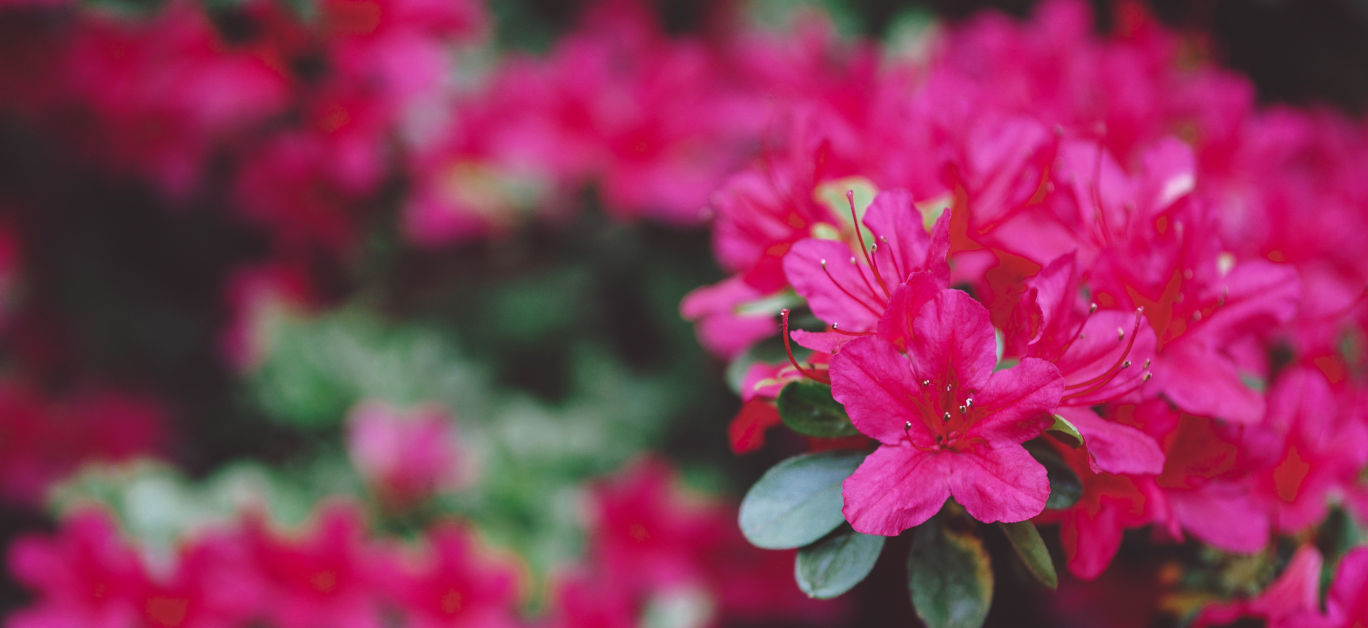With spring on the horizon, many people are starting to think of their gardens and are seeking out new ways to give their outdoor spaces a makeover. While a garden refresh is always recommended, you may be pleased to learn that it doesn’t have to take a complete overhaul to leave your garden looking beautiful and inviting, as you can make some small changes that will make quite the impact.
What’s more, those who prefer a lower maintenance garden will rejoice at the thought of planting some easy-to-maintain and great looking plants that means you can still have a beautiful garden with a selection of carefully chosen sun-loving flowers, ground covers, medium-sized shrubs, foliage plants and more to add colour and life.
Below, we have provided you with a list of our five favourite, easy-to-maintain garden plants with some key information to ensure you choose the right ones for your garden to allow them to fully flourish.
Hydrangea (Hydrangea spp.)
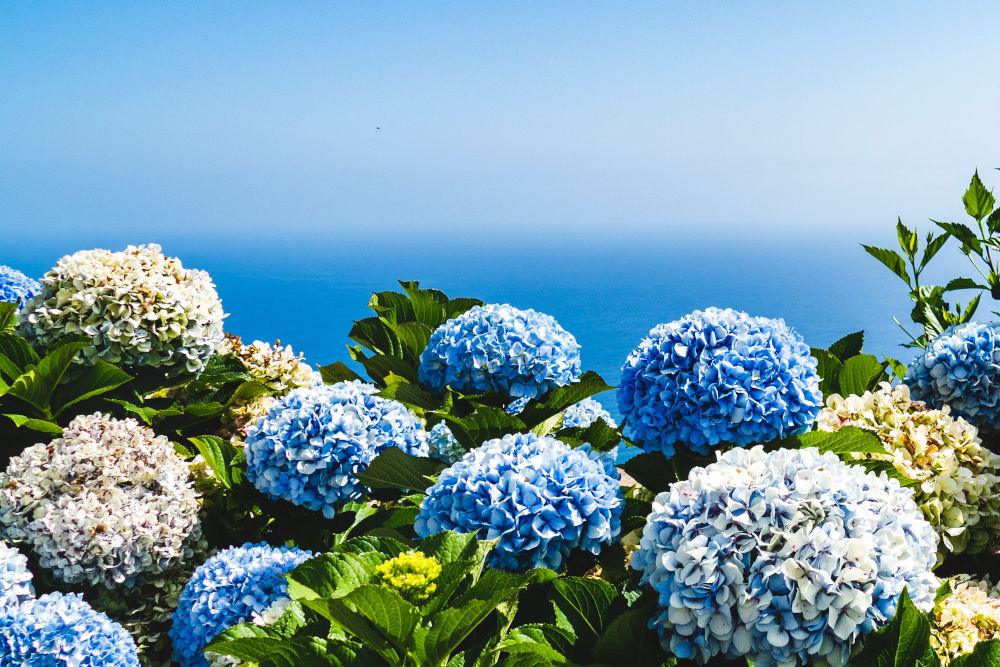
With many long-lasting flowers, hydrangeas flaunt an old-fashioned charm in summer that’s mesmerizing. Over the years, plant breeders have transformed hydrangeas into compact, floriferous plants with rich colours that are easy to grow and maintain.
During summer and spring, large globes of frosty white, red or pink flowers cover the shrub, and while they appear high maintenance, they’re easy to grow in the right conditions and with proper care. The best season to plant these shrubs is during autumn, followed by early spring. This allows the plant enough time to form a healthy root system before flowering.
Although hydrangeas seem to have delicate leaves and flowers, they don’t need a lot of care. All you need is to water them deeply during the first three weeks of growing seasons, and you might need to add some mulch to help in moisture retention. Some species of the plant will also benefit from fertiliser application, and since the bushes bloom on new wood, you will need to prune them in late winter or early spring.
USDA growing zones/ hardiness zones: 3 to 9
Colour varieties: Blue, green, white, red, pink, purple
Sun exposure: Full sun, part sun, shade
Soil needs: Loamy, medium moisture, well-drained
Types: Oakleaf, panicle, smooth, big leaf
Fuchsia (Fuchsia (Group))
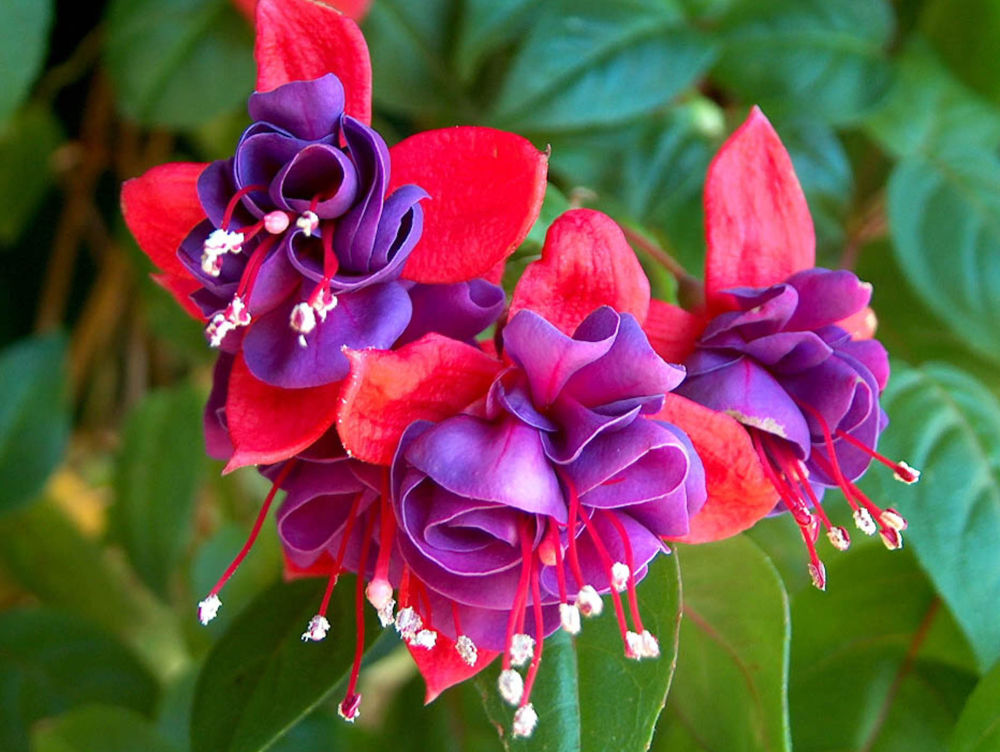
The fuchsia, which is native to South America and the Caribbean, is an elegant, delicate and stunning plant that comes in many varieties and colours. The plant boasts multi-coloured blossoms that hang and droop attractively when grown in planters, pots, or hanging baskets.
Fuchsia is an adaptable plant, it can grow in a variety of soil types, as long as they drain well and quickly. Wild fuchsia plants are perennial, but the common garden varieties are often grown as annuals and, during winter, homeowners usually discard them or bring them indoors and nurse them in bright and controlled conditions.
Unlike other garden plants, these shrubs require little maintenance, though they prefer consistently moist soils with a balanced organic matter ratio. They also prefer filtered light (indirect sunlight) and thrive well in shades. You also need to ensure you prune off dead leaves and stems and keep the area around the plant clean to avoid fungal infections and diseases.
USDA growing zones/ hardiness zones: 10 to 11
Colour varieties: Red, pink, violet, purple
Sun exposure: Partial, shade
Soil needs: Moist but well-drained
Lenten Rose (Helleborus orientalis)
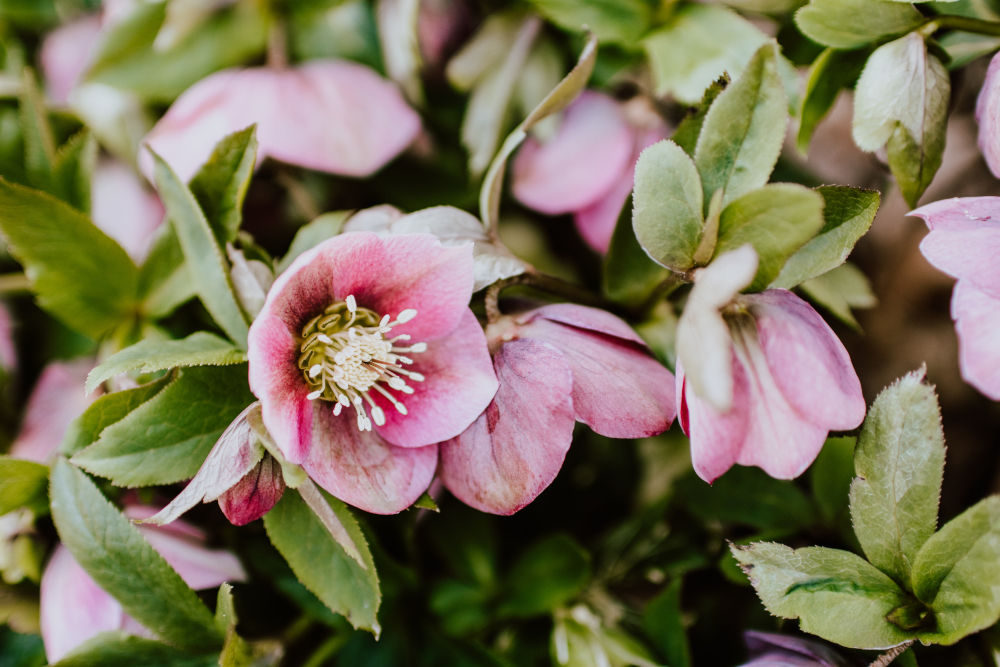
Lenten roses are not actually roses, but a hybrid of hellebore. They are a popular perennial that grow under shade, and these beautiful plants will brighten your garden throughout winter and spring with little to no maintenance.
Besides their gorgeous blooms (technically not flowers but sepals), Lenten roses are also loved for their attractive foliage. Each leaf of this hybrid plant features a long leafstalk ending in large, leather-like leaves clustered like fingers on a stretched hand.
Like the aforementioned plants, Lenten roses are low maintenance. You need to plant them under a canopy that allows light to penetrate but provides protection against strong winds. Lenten roses rarely get infected but avoid planting them on soil with poor drainage as this can promote root rot, which can lead to plant death.
USDA growing zones/ hardiness zones: 4 to 9
Colour varieties: Purple, white, pink
Sun exposure: Part shade to full shade
Soil needs: Loamy, moist, well-drained
Sunburst Honey Locust (Gleditsia triancanthos var. inermis ‘Suncole’)
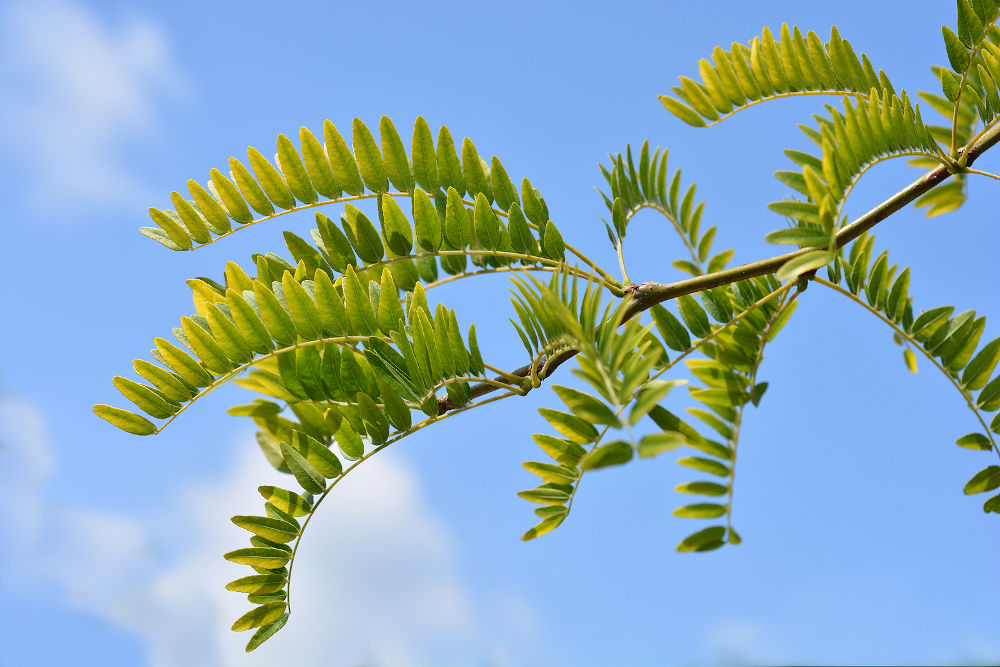
Sunburst Honey Locust is a shade tree, renowned for its subtle fern-like appearance, and brings yellow foliage that fades to light green. People love this seedless tree for its ability to withstand adverse growing conditions, like urban pollution and soils with a high PH.
Sunburst Honey Locust is appreciated for its lime-green leaves, which turn gold-yellow in spring and autumn. Its flowers and fruits have no ornamental value, but that shape of the leaves will make for a welcome addition to your garden. The trees grow up to 30 or 40 feet tall and require little care, owners only need to prune dead and diseased branches. When selecting a Sunburst Honey Locust, go for a thornless variety, especially if you want to plant it in a lawn space you often frequent.
USDA growing zones/ hardiness zones: 4 to 9
Colour varieties: Green – yellow
Sun exposure: Full sun
Soil needs: Tolerates most soil types
Columbine (Aquilegia spp.)
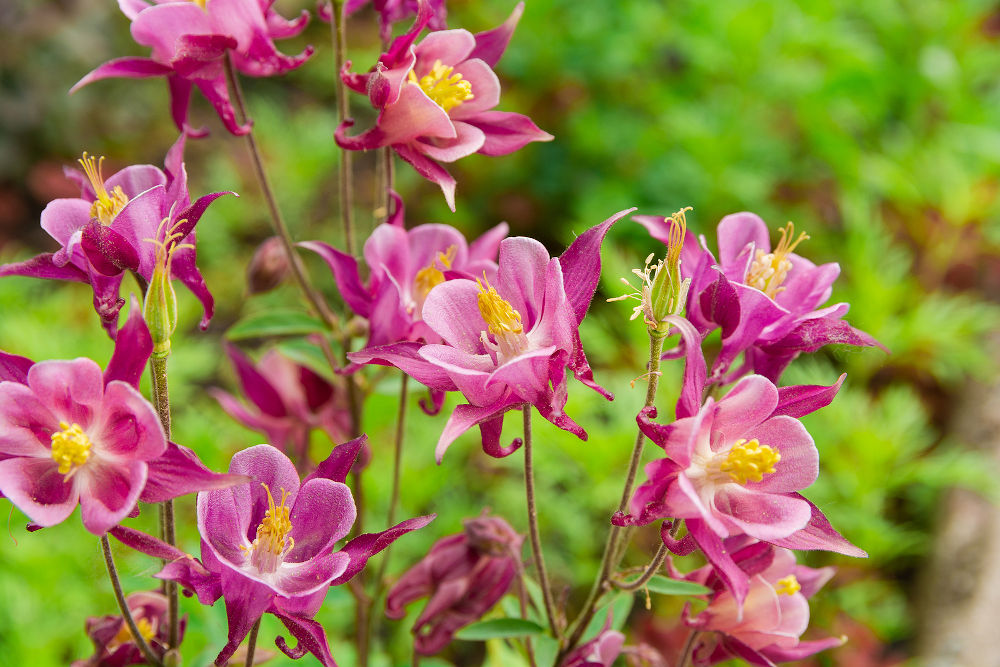
If you love native plants, consider planting Columbine. Native to Texas and the southwest, Columbine or Granny’s Bonnet makes an excellent garden perennial plant. It’s a low-care plant with colourful, bell-shaped flowers and attractive lacy foliage.
Most Columbine varieties bloom in mid-spring through summer and perform well in full sun to part shade in well-drained soils. These plants are widely adaptable and make a great addition to borders, rock gardens, shade gardens and more, and bees, butterflies, and hummingbirds love them.
You can plant your red columbine or Colorado columbine in containers, but you will need to provide it with water regularly. Despite its delicate appearance, this plant is tougher than it appears and can last for two to three years.
USDA growing zones/ hardiness zones: 3 to 8
Colour varieties: Red-orange, yellow
Sun exposure: Mostly sun, part sun, part shade
Soil needs: Clay, well amended garden soil, average garden soil












